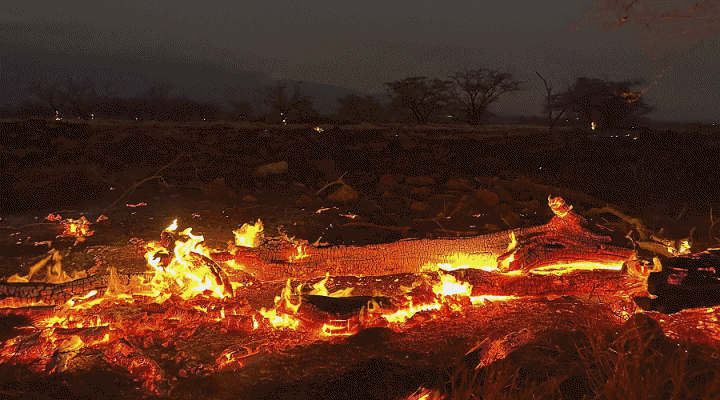UNDERSTANDING THE DEADLIEST FIREIN HAWAII | |
According to him, the search operations will last "probably ten more days" and the final results are currently "impossible to guess". If firefighters have done everything, risking their lives, to limit the damage, especially in the city of Lahaina, the number of people missing in the flames should increase further. "Total Devastation" The former capital of the Kingdom of Hawaii was almost razed by fire and the damage is immeasurable so far. The city, which was home to 12,000 people, appears to have been bombed, with thousands of buildings reduced to piles of greyish ash. "To be completely honest, there's nothing to see except utter devastation," acknowledged Governor Green, who visited the scene last week. As communication networks are gradually restored on the island, the number of missing is reduced: currently, according to the governor, it stands at 1,300 individuals, down from the 2,000 previously recorded. are going to shatter irreparably if it means so many deaths," he said. Authorities believe the toll won't be as heavy, but "we're preparing for many tragic stories," Green said. The population tried to flee somehow, some residents or tourists diving into the ocean to escape the fire. And while she is today in shock at the devastated landscapes, she is also angry and demanding answers The reaction of the authorities has indeed been singled out for several days. It is in particular the fact that the warning sirens were not turned on which raises questions. Especially since the network having been cut during the fires, many residents were also unable to receive a signal on their telephones, informing them of the situation and inviting them to leave their homes. However, the warning system in Hawaii is one of the most sophisticated in the world. It has some 400 alarms spread across the state, making it the most comprehensive on the planet. On the island of Maui, the second largest in the Hawaiian archipelago, no less than 80 outdoor sirens are operational to warn residents in the event of a tsunami or other natural disasters. However, at the beginning of August, they remained strangely silent. "No one in the state or county attempted to activate these sirens," admitted Adam Weintraub, spokesman for the Hawaii Emergency Management Agency. However, he explains that this decision depended greatly on the speed at which the flames progressed. The effort to coordinate relief operations on the ground simultaneously with the triggering of other warning systems also played a role. Nevertheless, the causes of such a heavy toll are not attributable solely to human action. Another factor that played a key role in the extent of the fires that devoured Hawaii was the abandonment of farmland in the 1990s. The once well-maintained fields, which could have slowed the spread of the fire, were replaced by huge expanses of non-native vegetation, left abandoned. Clay Trauernicht, a fire expert at the University of Hawaii, explained on Twitter that over the past 30 years, invasive weeds such as guinea grass and fountain grass have been introduced. These have a double particularity: they grow back quickly after a fire, but also ignite more easily. In Lahaina, the closure of sugar cane farms in the 1990s also led to the shutdown of irrigation systems that could have stemmed the spread of fires. Particularly unfavorable weather conditions also played a role in the disaster scenario that unfolded on the island of Maui. The flames were fanned by strong winds, which exceeded 100 km / h according to the US Weather Services (NWS). They were powered by a Category 4 hurricane dubbed Dora. To make matters worse, the year was much less rainy than usual in Hawaii: 16% of the territory was affected by a "severe" drought on Wednesday August 9th. Another source of anger in Maui, the help which is struggling to arrive and the lack of reaction from Joe Biden, the American president. On Wednesday, he announced that he would be going there with his wife Jill next Monday. The couple must "meet rescue teams, survivors as well as official officials", announced their spokeswoman Karine Jean-Pierre. "I remain committed to making sure the people of Hawaii have everything they need to recover from this disaster," the president wrote on X (formerly known as Twitter). | |
| Britney Delsey for DayNewsWorld | |
 |
|




